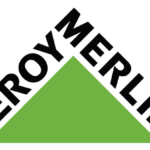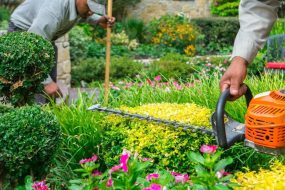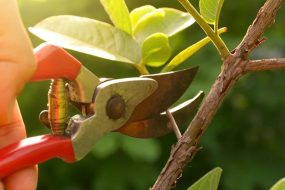
Welcome to our comprehensive guide on lawn care and maintenance. A well-maintained lawn can be the centerpiece of your outdoor space, providing a lush and inviting environment for relaxation and outdoor activities. In this guide, we will explore the essential practices and tips to help you achieve a vibrant and healthy lawn. Whether you are a beginner or an experienced gardener, this article will provide you with valuable insights and actionable advice to elevate your lawn care routine.
The Importance of Lawn Care and Maintenance
Nurturing Your Yard’s Health and Beauty
Proper lawn care and maintenance play a vital role in ensuring the health and beauty of your yard. A well-maintained lawn not only enhances the aesthetics of your property but also contributes to a cleaner environment, provides natural cooling, and reduces soil erosion. By implementing effective lawn care practices, you can create a vibrant and sustainable landscape that brings joy and pride to your home.
Professional Lawn Care and Maintenance Services
While some homeowners prefer to handle lawn care tasks themselves, others may benefit from the expertise and convenience of professional services. Hiring lawn care and maintenance services can save you time and effort, ensuring that your yard receives the specialized attention it deserves. These services often include mowing, fertilization, weed control, aeration, and pest management, among others.
Tips for Effective Lawn Care and Maintenance
Tip 1: Mowing Techniques for a Healthy Lawn
Proper mowing techniques are essential for maintaining a healthy and attractive lawn. Here are some key tips to keep in mind:
- Set your mower blades to the appropriate height for your grass type. Different grass species have different ideal cutting heights.
- Avoid cutting more than one-third of the grass blade length in a single mowing session to prevent stress and scalping.
- Alternate your mowing patterns regularly to encourage upright growth and prevent soil compaction.
Tip 2: Essential Practices for Watering
Watering your lawn correctly is crucial for its health and vitality. Consider the following practices:
- Water deeply and infrequently to encourage deep root growth and drought tolerance.
- Water early in the morning to minimize evaporation and fungal growth.
- Adjust your watering schedule according to weather conditions, as excessive rainfall may reduce the need for supplemental watering.
Tip 3: Fertilization and Weed Control
Proper fertilization and weed control are vital components of lawn care. Here’s what you need to know:
- Conduct a soil test to determine your lawn’s nutrient needs and choose a fertilizer with the appropriate balance of nutrients.
- Apply fertilizer at the recommended rates and timing, considering the specific requirements of your grass type.
- Implement an effective weed control program, including pre-emergent and post-emergent herbicides, as well as regular manual weed removal.
Frequently Asked Questions (FAQs)
1. Are professional lawn care and maintenance services worth it?
Professional lawn care services can be beneficial for homeowners who lack the time, knowledge, or physical ability to maintain their lawn effectively. These services provide expert care and convenience, ensuring that your lawn remains healthy and visually appealing throughout the year.
2. How often should I mow my lawn?
The frequency of mowing depends on the growth rate of your grass and the season. As a general guideline, aim to mow your lawn when it has grown approximately one-third higher than the ideal cutting height for your grass species. This usually translates to mowing every 7-10 days during the growing season.
3. When is the best time to fertilize my lawn?
The timing of fertilization depends on your grass type and the specific fertilizer product you use. In general, it’s best to apply fertilizer during the active growth periods of your grass, typically in spring and fall. Be sure to follow the instructions provided by the fertilizer manufacturer for optimal results.
4. How can I prevent weeds from invading my lawn?
Preventing weeds involves a combination of proactive measures. Start by maintaining a healthy and dense lawn through proper watering, mowing, and fertilization. Additionally, apply pre-emergent herbicides before weed seeds germinate and use post-emergent herbicides or manual removal to address existing weeds.
5. What should I do if my lawn has bare patches or thinning areas?
Bare patches or thinning areas in your lawn can be caused by various factors, including foot traffic, disease, or improper maintenance. To address these issues, consider overseeding the affected areas with suitable grass seed, improving soil conditions, and adjusting your lawn care practices to promote recovery and regrowth.
Conclusion
Achieving a lush and healthy lawn requires dedication, knowledge, and consistent care. By following the tips and practices outlined in this comprehensive guide, you can create an environment that fosters the growth and beauty of your yard. Whether you choose to handle the tasks yourself or enlist the help of professional lawn care services, the rewards of a vibrant and well-maintained lawn will be evident in the pride and enjoyment it brings to your outdoor space. Embrace the art of lawn care and maintenance, and unlock the true potential of your yard.
Advertisement







